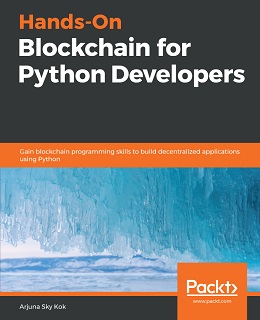Hands-On Blockchain for Python Developers
eBook Details:
- Paperback: 450 pages
- Publisher: WOW! eBook (February 14, 2019)
- Language: English
- ISBN-10: 1788627857
- ISBN-13: 978-1788627856
eBook Description:
Hands-On Blockchain for Python Developers: Implement real-world decentralized applications using Python, Vyper, Populus, and Ethereum
Blockchain is seen as the main technological solution that works as a public ledger for all cryptocurrency transactions. This book serves as a practical guide to developing a full-fledged decentralized application with Python to interact with the various building blocks of blockchain applications.
Hands-On Blockchain for Python Developers starts by demonstrating how blockchain technology and cryptocurrency hashing works. You will understand the fundamentals and benefits of smart contracts such as censorship resistance and transaction accuracy. As you steadily progress, you’ll go on to build smart contracts using Vyper, which has a similar syntax to Python. This experience will further help you unravel the other benefits of smart contracts, including reliable storage and backup, and efficiency. You’ll also use web3.py to interact with smart contracts and leverage the power of both the web3.py and Populus framework to build decentralized applications that offer security and seamless integration with cryptocurrencies. As you explore later chapters, you’ll learn how to create your own token on top of Ethereum and build a cryptocurrency wallet graphical user interface (GUI) that can handle Ethereum and Ethereum Request for Comments (ERC-20) tokens using the PySide2 library. This will enable users to seamlessly store, send, and receive digital money. Toward the end, you’ll implement InterPlanetary File System (IPFS) technology in your decentralized application to provide a peer-to-peer filesystem that can store and expose media.
By the end of this book, you’ll be well-versed in blockchain programming and be able to build end-to-end decentralized applications on a range of domains using Python.
